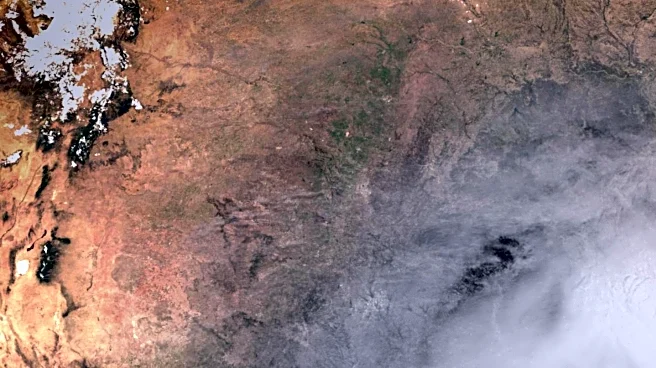What is the story about?
What's Happening?
A recent study published in Science highlights a paradox in global wildfire trends, revealing that while the area of land burned by wildfires has decreased by 26% from 2002 to 2021, the number of people at risk has surged by nearly 40%. Researchers from the University of California, Irvine, found that nearly 440 million people globally have been exposed to wildfires during this period. This increase in exposure, approximately 7.7 million people annually, is largely attributed to rising population numbers and the migration of people into fire-prone landscapes. The study emphasizes the role of climate change, urban expansion, and agricultural practices in creating fire-prone landscapes, alongside population growth exacerbating the situation.
Why It's Important?
The findings underscore the growing vulnerability of human populations to wildfires, even as the overall area burned decreases. This increased exposure poses significant challenges for disaster management and emergency preparedness, particularly in regions like California, which experiences a disproportionately large share of U.S. fire impacts. The study also highlights the disproportionate impact on Africa, where 85% of global wildfire exposure occurs, emphasizing the need for a global perspective on wildfire risk. As climate change intensifies fire weather conditions, proactive mitigation strategies will be crucial to reduce the risk of future wildfire disasters.
What's Next?
The study suggests that proactive wildfire management and disaster planning will become increasingly critical as climate change continues to intensify fire weather conditions globally. Regions like California, which have long struggled with severe fires, are seeing an increase in the frequency of extreme-impact wildfires. The frequency of fire weather conditions conducive to such fires has quadrupled in California from 1990 to 2022, creating an urgent need for effective mitigation strategies to protect vulnerable populations.
Beyond the Headlines
The study highlights the ethical and socio-economic dimensions of wildfire exposure, particularly in African nations that face unique challenges due to limited resources for disaster prevention and response. The concentration of wildfire exposure in these regions may be linked to agricultural practices and deforestation, emphasizing the need for sustainable land management practices. Additionally, the study calls for a more global perspective on wildfire risk, as regions outside of the Western media spotlight are disproportionately impacted by these natural disasters.
AI Generated Content
Do you find this article useful?











